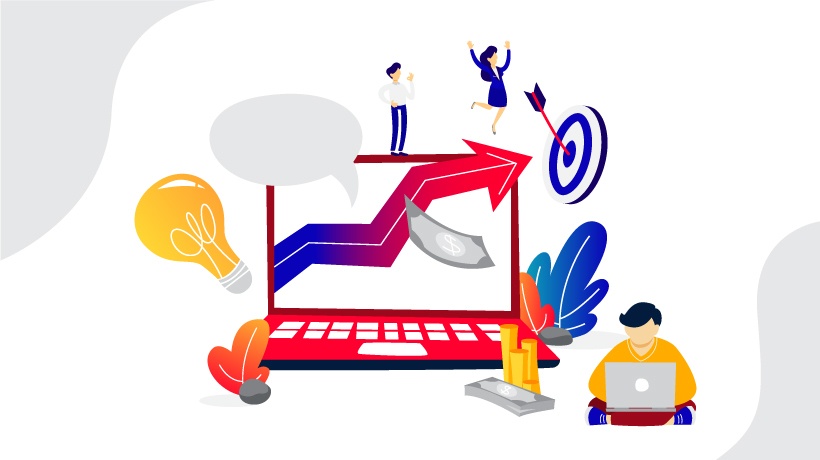Linking Training And Quality To Boost Ramp Speed
In fast-paced support and service organizations, the pressure to get new hires productive quickly has never been greater. Time to Competence is closely watched. CSAT scores are scrutinized. Every week of underperformance impacts both cost and customer loyalty. Yet many teams continue to treat Training and Quality as separate functions—sometimes even as silos.
That's the missing link. When Training and Quality teams operate in isolation, the result is a lag between learning and doing. But when they collaborate—sharing goals, feedback loops, and success metrics—they create a powerful ecosystem that accelerates readiness and lifts performance at scale. Alignment between Training and Quality isn't just operational hygiene—it's a strategic accelerator.
Here's why this collaboration matters more than ever, and how leading organizations are rethinking the way these two pillars work together to drive faster ramp-up, better QA scores, and stronger customer satisfaction or business KPIs.
Why Training And Quality Need Each Other
Training teams build knowledge, introduce tools, and coach behaviors. Quality teams assess real-world performance and provide feedback for improvement. The challenge? Without real-time alignment, there's often a gap between what's trained and what's expected.
Common symptoms include:
- New hires failing quality audits despite passing training.
- Feedback from QA not reaching L&D fast enough.
- Quality forms misaligned with training objectives.
- Performance coaching duplicating or contradicting training guidance.
That misalignment can delay ramp-up by weeks and confuse both learners and managers.
The Benefits Of Aligning Training And Quality
When Training and Quality collaborate effectively, organizations unlock a powerful loop of insight, action, and reinforcement. Here's what changes:
1. Faster Time To Competence
Quality teams can identify real-world struggles early (e.g., tone, process misses, policy misapplication), which helps Training teams adjust onboarding or simulate relevant practice scenarios.
Impact: Learners reach baseline performance faster—sometimes reducing ramp time by 20–30%.
2. Contextualized Feedback Loops
Rather than isolated QA feedback or post-training surveys, aligned teams create co-owned feedback systems—where real performance data informs future training, and learning progress informs QA expectations.
Impact: Continuous learning becomes part of the workflow, not just the classroom.
3. Unified Performance Language
When Training and Quality use the same language to define excellence (e.g., clarity, empathy, adherence), it reinforces expectations across the learner journey, from onboarding to live support.
Impact: Less confusion, more confidence, and smoother coaching conversations.
4. Improved Topline Metrics, Like CSAT Or Resolution Rate, And QA Scores
When agents feel prepared and supported—and their training mirrors real quality standards—they perform better, leading to higher CSAT or Resolution Rate and fewer escalations.
Impact: Performance lifts are seen in both customer-facing metrics and internal quality reviews.
5 Practical Ways To Align Training And Quality
1. Co-Design Onboarding Content And QA Forms
Instead of building content and auditing separately, bring both teams together to define:
- What "good" looks like in live interactions.
- What skills must be trained vs. coached.
- How early QA data can be mapped to training KPIs.
Tip: Build the QA form before the training plan—then train to it.
2. Create Shared Ramp KPIs
Agree on a common definition of "ready"—whether that's a QA score of 90%, CSAT over 85%, or full tool fluency. Aligning on shared KPIs ensures both teams focus on outcomes, not just activities.
Tip: Use Time to Competence as your north star—and define it collaboratively.
3. Introduce Post-Onboarding Calibration Sessions
Run regular "syncs" between Training, QA, and team leads to:
- Review early performance patterns.
- Identify common gaps.
- Adjust simulations or refresher content.
Tip: Turn calibration from a QA-only ritual into a cross-functional habit.
4. Embed Real QA Scenarios Into Training Simulations
Use anonymized, real QA fails or successes to design high-impact simulations. This helps learners practice handling edge cases before they encounter them live.
Tip: Tag each simulation to the corresponding QA behavior for traceability.
5. Use Quality Data To Build Reinforcement Loops
QA data is a goldmine of learning moments. Use it to:
- Trigger microlearning nudges.
- Create "booster" modules.
- Customize 1:1 coaching plans.
Tip: Set up dashboards or alerts that flag trending errors to L&D teams in real time.
The Cross-Functional Multiplier Effect
When L&D and QA teams move from parallel to interlocked, the impact multiplies:
- New hires feel better supported.
- Managers get clearer signals.
- Training is more relevant.
- Coaching is more consistent.
- Customers notice the difference.
The result? A shorter ramp curve, stronger quality floor, and higher confidence at every level.
Final Thought: Build One Performance Ecosystem
In high-velocity environments, Training and Quality can no longer afford to operate on different timelines or feedback cycles. They must co-own the journey from knowledge to performance. That's how you reduce Time to Competence. That's how you improve topline metrics like CSAT, Resolution Rate, and Retention. And that's how you build a culture where learning doesn't end at onboarding—it evolves with the work!









